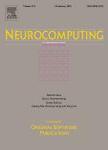版权所有:内蒙古大学图书馆 技术提供:维普资讯• 智图
内蒙古自治区呼和浩特市赛罕区大学西街235号 邮编: 010021

作者机构:Univ Naples Federico II DIETI Naples Italy Univ Naples Parthenope DI Naples Italy Univ Salerno DIEM Fisciano Italy Univ Mediterranea Reggio Calabria DIIES Reggio Di Calabria Italy
出 版 物:《NEUROCOMPUTING》 (神经计算)
年 卷 期:2020年第444卷
页 面:79-91页
核心收录:
学科分类:08[工学] 0812[工学-计算机科学与技术(可授工学、理学学位)]
主 题:Big data processing E-health Machine learning Random forests Multi-classification schema
摘 要:The use of pervasive IoT devices in Smart Cities, have increased the Volume of data produced in many and many field. Interesting and very useful applications grow up in number in E-health domain, where smart devices are used in order to manage huge amount of data, in highly distributed environments, in order to provide smart services able to collect data to fill medical records of patients. The problem here is to gather data, to produce records and to analyze medical records depending on their contents. Since data gathering involve very different devices (not only wearable medical sensors, but also environmental smart devices, like weather, pollution and other sensors) it is very difficult to classify data depending their contents, in order to enable better management of patients. Data from smart devices couple with medical records written in natural language: we describe here an architecture that is able to determine best features for classification, depending on existent medical records. The architecture is based on pre filtering phase based on Natural Language Processing, that is able to enhance Machine learning classification based on Random Forests. We carried on experiments on about 5000 medical records from real (anonymized) case studies from various health-care organizations in Italy. We show accuracy of the presented approach in terms of Accuracy-Rejection curves. (c) 2021 Elsevier B.V. All rights reserved.